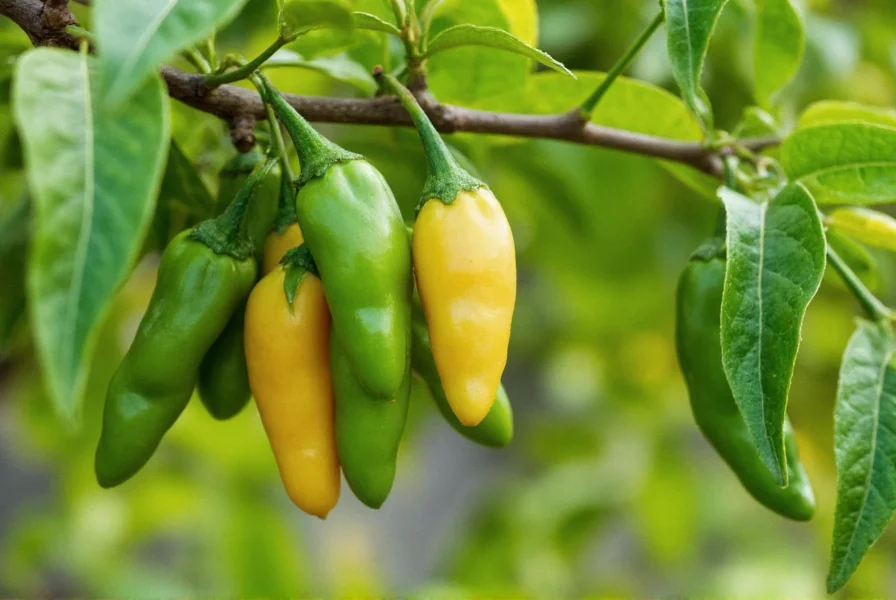Understanding the distinction between pepper types is essential for gardeners, chefs, and nutrition enthusiasts. This comprehensive guide explores the botanical reality, varieties, nutritional profiles, and practical applications of genuine pepper fruits.
Botanical Classification: Why Peppers Are Fruits
From a botanical perspective, any structure that develops from a flower's ovary and contains seeds qualifies as a fruit. Pepper plants produce flowers that, once pollinated, develop into fleshy structures housing numerous seeds—meeting the scientific definition of a berry. This classification applies to all Capsicum varieties, including:
- Bell peppers (Capsicum annuum)
- Jalapeños (Capsicum annuum)
- Habaneros (Capsicum chinense)
- Ghost peppers (Capsicum chinense)
- Sweet banana peppers (Capsicum annuum)
The culinary world traditionally categorizes peppers as vegetables due to their savory flavor profile and common use in savory dishes. This historical misclassification persists despite clear botanical evidence. Understanding this distinction helps consumers make informed choices about nutrition and cooking applications.
Pepper Fruit Varieties and Characteristics
Capsicum species offer remarkable diversity in color, shape, heat level, and flavor. The Scoville scale measures capsaicin concentration, which determines heat intensity:
| Pepper Variety | Scoville Heat Units | Color Range | Common Culinary Uses |
|---|---|---|---|
| Bell Peppers | 0 SHU | Green, red, yellow, orange, purple | Salads, stir-fries, stuffed dishes |
| Jalapeños | 2,500-8,000 SHU | Green to red | Salsas, nachos, pickled preparations |
| Serranos | 10,000-23,000 SHU | Green to red | Hot sauces, guacamole, Mexican cuisine |
| Habaneros | 100,000-350,000 SHU | Orange, red, chocolate | Caribbean sauces, hot sauces, marinades |
| Ghost Peppers | 855,000-1,041,427 SHU | Red, yellow, chocolate | Extreme hot sauces, competitive eating |
Color development indicates ripeness and nutritional changes—red bell peppers contain nearly nine times more beta-carotene than green varieties. The heat level in chili peppers depends on growing conditions, with stress factors like drought increasing capsaicin production.

Nutritional Profile and Health Benefits
Pepper fruits deliver exceptional nutritional value, particularly when consumed raw. A medium red bell pepper provides:
- 169% of daily vitamin C requirement
- 15% of vitamin B6
- 10% of vitamin K1
- 93% of daily vitamin A needs
- Significant potassium and folate
The vibrant pigments in colored peppers indicate various phytonutrients. Orange peppers contain high levels of beta-cryptoxanthin, while purple varieties feature anthocyanins. Capsaicin, the compound responsible for heat in chili peppers, offers documented health benefits including pain relief, metabolism boost, and potential anti-cancer properties.
Research published in the Journal of Agricultural and Food Chemistry confirms that cooking methods affect nutrient retention. Steaming preserves more vitamin C than boiling, while roasting enhances carotenoid absorption when consumed with healthy fats.
Culinary Applications Across Cultures
Chefs worldwide utilize pepper fruits' diverse characteristics in traditional and innovative dishes. Understanding regional usage patterns helps home cooks expand their culinary repertoire:
- Mexican cuisine features roasted poblano peppers in chiles en nogada
- Thai cooking incorporates bird's eye chilies in curries and salads
- Hungarian paprika (made from sweet peppers) flavors goulash and stews
- Italian cuisine uses sweet peppers in roasted vegetable medleys
- Indian cuisine employs green chilies in chutneys and pickles
When substituting pepper varieties, consider both heat level and flavor profile. A habanero's fruity notes differ significantly from a cayenne's sharper heat. For those sensitive to capsaicin, removing seeds and white membranes reduces heat intensity without sacrificing flavor.
Growing Pepper Fruits Successfully
Gardeners can cultivate pepper fruits with attention to specific requirements. These warm-season plants need:
- 8-10 hours of direct sunlight daily
- Soil temperature above 65°F (18°C) for germination
- Consistent moisture without waterlogging
- pH between 6.0-6.8
- Regular feeding with balanced fertilizer
Starting seeds indoors 8-10 weeks before last frost increases success rates. Pepper plants benefit from calcium supplementation to prevent blossom end rot. When harvesting, use clean scissors to avoid damaging plant stems—peppers continue producing when regularly picked.
Common Misconceptions Clarified
Several persistent myths surround pepper fruits:
- Misconception: Black pepper and chili peppers are closely related
Fact: Black pepper (Piper nigrum) belongs to a different plant family than chili peppers (Capsicum) - Misconception: Green peppers are unripe versions of colored peppers
Fact: While some varieties change color as they ripen, certain peppers remain green when mature - Misconception: Removing seeds eliminates all heat from chili peppers
Fact: While seeds carry some capsaicin, the highest concentration exists in the white placental tissue
Frequently Asked Questions
Are peppers technically fruits or vegetables?
Botanically, all peppers are fruits because they develop from flower ovaries and contain seeds. Culinary tradition classifies them as vegetables due to their savory flavor profile, but scientifically they're berries in the Capsicum genus.
What's the difference between black pepper and chili peppers?
Black pepper comes from the Piper nigrum plant and produces peppercorns, which are dried berries. Chili peppers belong to the Capsicum genus. They're from completely different plant families with distinct chemical compounds responsible for their heat.
Why do red bell peppers taste sweeter than green ones?
As bell peppers ripen from green to red, their sugar content increases while chlorophyll decreases. Red peppers contain nearly nine times more beta-carotene and significantly more vitamin C than their green counterparts, explaining the sweeter taste.
How can I reduce the heat level when cooking with chili peppers?
To reduce heat, remove the seeds and white placental tissue where most capsaicin concentrates. Cooking with dairy products like yogurt or cheese can neutralize capsaicin, as can adding acidic ingredients like lime juice. Avoid touching your face after handling hot peppers.
What are the health benefits of eating pepper fruits regularly?
Pepper fruits provide exceptional vitamin C and A content, plus antioxidants like carotenoids and capsaicin. Regular consumption supports immune function, eye health, and may reduce inflammation. The capsaicin in chili peppers has been linked to metabolism boost and pain relief properties.











 浙公网安备
33010002000092号
浙公网安备
33010002000092号 浙B2-20120091-4
浙B2-20120091-4